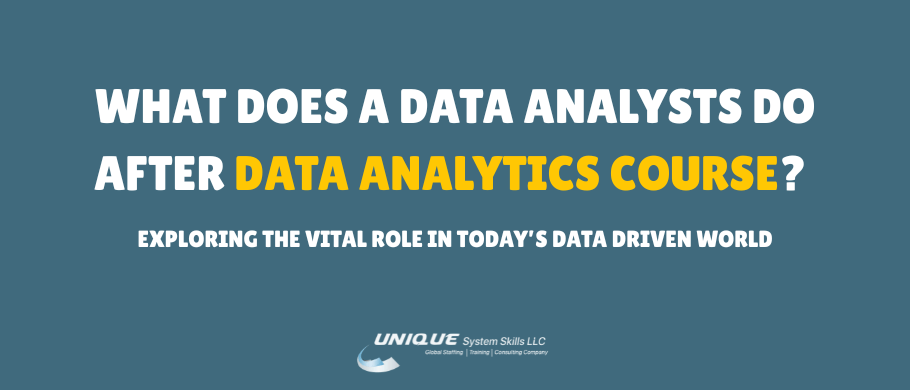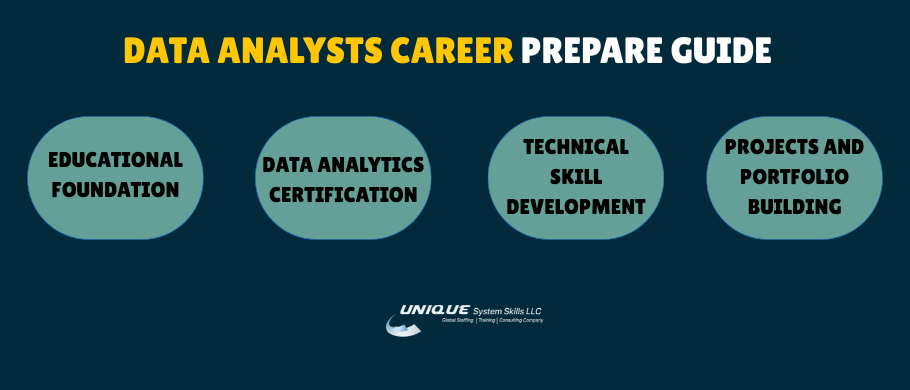
In our data-driven world, information has become the most valuable business asset. According to Statista, the global big data and data analysts market is projected to grow to $103 billion by 2027, while IBM reports that 2.5 quintillion bytes of data are created daily. Yet raw data alone holds little value—only 27% of companies report successfully deriving actionable insights from their data (NewVantage Partners).
This is where data analysts become indispensable. They serve as strategic translators, converting complex datasets into clear business intelligence. At AlgoCademy, where we specialize in building in-demand technical skills, we’ve seen firsthand how data analytics expertise opens doors—with the U.S. Bureau of Labor Statistics projecting 25% growth for data-related roles by 2032, far outpacing average job growth.
This comprehensive guide will explore what data analysts do, the skills they need, their daily responsibilities, and how you can prepare for a career in this growing field.
The Fundamental Role of a Data Analysts
At its core, data analysis is the process of transforming raw data into strategic insights through systematic examination, cleaning, transformation, and modeling. Data analysts act as critical intermediaries who convert complex datasets into actionable business intelligence that drives informed decision-making across organizations.
Key Responsibilities of Data Analysts
While specific tasks vary by industry, these core functions define the role:
1. Data Collection & Management
- Aggregating structured and unstructured data from databases, APIs, surveys, and IoT devices
- Implementing data governance protocols to ensure accuracy and accessibility.
2. Data Cleaning & Preparation
- Addressing missing values, outliers, and inconsistencies (e.g., standardizing date formats)
- Deduplicating records and validating datasets before analysis
3. Data Analysis
- Applying statistical methods (regression, clustering) and diagnostic analytics
- Identifying trends, correlations, and predictive patterns using tools like Python/R
4. Data Visualization
- Designing interactive dashboards (Tableau/Power BI) and static reports
- Selecting optimal chart types to highlight key findings (heatmaps for density, line charts for trends)
5. Reporting & Presentation
- Translating technical insights into business recommendations
- Tailoring communication to stakeholder expertise (C-suite vs. technical teams)
This end-to-end process converts organizational data from a passive resource into a strategic asset—with analysts spending up to 80% of their time on preparation (IBM Research) to ensure the remaining 20% of analysis delivers maximum impact.
A Day in the Life of a Data Analysts?
The daily routine of a data analysts after completing their data analytics training and certification varies depending on the industry, company size, and specific role, but here’s what a typical day might include:
Morning Tasks
A data analyst might start their day by checking automated reports and dashboards to identify any anomalies or issues that need immediate attention. Check overnight-generated dashboards in Tableau/Power BI for anomalies. Also, verify ETL pipeline status and data freshness alerts
During the morning, they might also spend time with stakeholders (marketing, product teams) on priority analysis. Clarify requirements for new data requests.
Midday: Deep Analysis & Problem-Solving
Data Cleaning – Handle missing values in Python
Statistical Modeling – Run regression analysis in R to identify sales drivers:
Afternoon: Visualization & Stakeholder Communication
Dashboard Development – Build interactive Tableau visualizations with calculated fields:
Essential Skills for Data Analysts
In today’s data-driven landscape, successful data analysts blend technical data analytics mastery with strategic thinking and storytelling abilities. Whether you’re a recent graduate or a professional transitioning into analytics, these core competencies will define your career trajectory:
Technical Skills: The Data Analysts Toolkit
Data analysts rely on various tools and technologies to perform their work effectively:
Data Query and Manipulation
- SQL: The standard language for database queries
- Python: Versatile programming language with powerful data libraries like Pandas and NumPy
- R: Statistical programming language particularly strong for statistical analysis
Data Visualization
- Tableau: Industry leading visualization tool for creating interactive dashboards
- Power BI: Microsoft’s business analytics service
- Python libraries: Matplotlib, Seaborn, and Plotly for custom visualizations
Statistical Analysis
- SPSS: Statistical Package for the Social Sciences
- SAS: Statistical Analysis System
- Python/R libraries: SciPy, StatsModels, and R’s built in statistical functions
Soft Skills of Data Analysts: The Human Edge in Data
- Analytical Problem-Solving – Systematically breaking down ambiguous business questions
- Precision & Quality Control – Implementing validation checks at every analysis stage
- Cross-Functional Communication- Tailoring explanations by audience:
- Business Acumen – Understanding how data creates value in your industry
- Intellectual Curiosity – The trait distinguishing good analysts from great ones
How to Prepare for a Data Analysts Career

1. Build a Strong Educational Foundation
While not always mandatory, a degree in the following fields can provide a solid base:
- Statistics or Mathematics
- Computer Science
- Economics or Business
- Information Systems
2. Develop Essential Technical Skills
To succeed as a data analysts, focus on gaining expertise in:
- SQL – for querying and managing databases
- Python or R – for data manipulation and analysis
- Excel & Data Visualization Tools – such as Power BI or Tableau
- Statistics – to interpret and analyze data accurately
3. Build Real-World Projects & Portfolio
Demonstrate your skills through practical experience:
- Work on personal projects using public datasets
- Join data competitions on platforms like Kaggle
- Contribute to open-source data projects
- Showcase your work and process in a professional portfolio
4. Get Certified
Boost your credibility and employability with relevant certifications:
- UNIQUE System Skills Data Analytics Professional Certificate
- IBM Data Analyst Professional Certificate
- Tableau Desktop Specialist
How UNIQUE System Skills LLC Can Help You Become a Data Analyst?
At UNIQUE System Skill India Pvt. Ltd., we provide:
🎯 Interactive Coding Tutorials – Master SQL, Python, and data manipulation.
📊 Real-World Projects – Gain hands-on experience.
🤖 AI-Powered Guidance – Get instant feedback on your code.
💼 Interview Prep – Practice common data analyst interview questions.
Our step by step approach takes you from basic programming concepts to advanced data manipulation techniques, ensuring you build a solid foundation for your data analysis career.
Conclusion
Data analysts play a crucial role in today’s data driven business environment, transforming raw information into valuable insights that drive decision making. With a combination of technical skills, analytical thinking, and business understanding, with the help of Data Analytics Certification Programs, Data Analysts will help organizations identify opportunities, solve problems, and gain competitive advantages.
As data continues to grow in volume and importance, the demand for skilled data analysts is expected to increase across all industries. Whether you’re considering a career change or looking to enhance your current skill set, developing data analysis capabilities can open doors to rewarding and impactful professional opportunities.
Ready to start your journey toward becoming a data analyst? Explore UNIQUE System Skills India Pvt. Ltd. courses and resources designed to help you build the technical foundation you need to succeed in this dynamic field.

